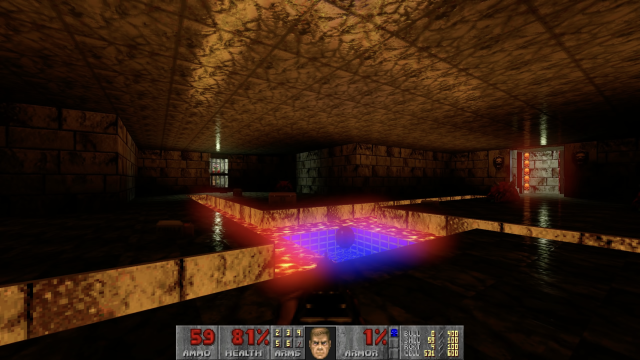When you hear the words “ray tracing,” your mind likely dredged up images of cutting-edge games. Ray tracing didn’t hit mainstream PC GPUs until 2018, and only the latest generation of consoles supports the tech, so it wasn’t much of a consideration for a majority of the gaming community until recently. Still, retro games can benefit from ray tracing — even a nearly 30-year-old classic like Doom.
For the uninitiated, ray tracing is a rendering process that produces more realistic lightning conditions in games than compared to traditional in-game lighting methods. Basically, “rays” are sent out from the perspective of the player; if a ray hits an object, it then sends itself towards the nearest light source, so it knows how that object is supposed to be lit. It’s the opposite approach of having the computer trace the rays for all light sources in the area, as you’re only following the rays being processed at any given moment.
Back to the topic at hand: Developer sultim-t has created a version of Doom that utilises ray tracing in a really cool way. Not one of the newer entries in the franchose, mind you: Sultim-t has added ray tracing to first three episodes of Doom, from the long-ago time of 1993.
As you can see from the sample video below, the results are phenomenal. The game itself remains the same pixelated masterpiece you probably already know and love, but the added ray tracing really makes the environments pop. Dark rooms are eerier, explosions and more explosive, and lava and plasma glow in florescent reds and purples, the mod breathing new life into a 30-year-old game.
To check out the effect for yourself, you’ll need an Nvidia GPU. (Hopefully we’ll see AMD GPU support in the future.) You’ll also need a .wad file of the original Doom. You can grab this file from the purchased version of Ultimate Doom from stores like Steam or GOG, the latter of which is running a decent sale as of this writing.
If you have an Nvidia GPU, setting the game up is relatively simple: First, download and unzip the prboom-rt.zip file found on sultim-t’s GitHub page into a new, blank folder. Drop your DOOM.wad file into this folder, then run the “prboom-plus” app to get going.
Unfortunately, even with an NVIDIA GPU, some users are running into issues, myself included — when I try to run the game, I’m greeted with a “Signal 11″ error. This isn’t necessarily an issue with sultim-t’s mod, as this Signal 11 error seems to be a legacy problem with the PrBoom app. With any luck, your machine won’t experience this issue, and you can run down the corridors of Doom in all their ray-traced glory.
And this isn’t the only retro game to benefit from ray tracing mods. Sultim-t has also added ray tracing to Half-Life and Serious Sam TFE. Playing any of these will show you what ray tracing can do, even for games that don’t take place in hell.

Leave a Reply
You must be logged in to post a comment.